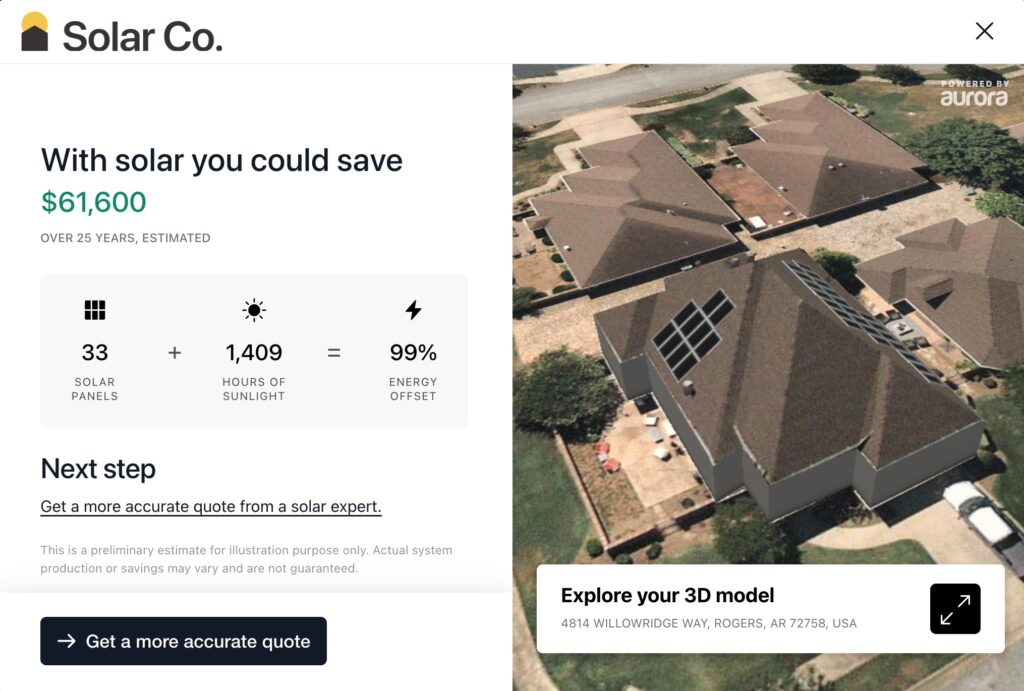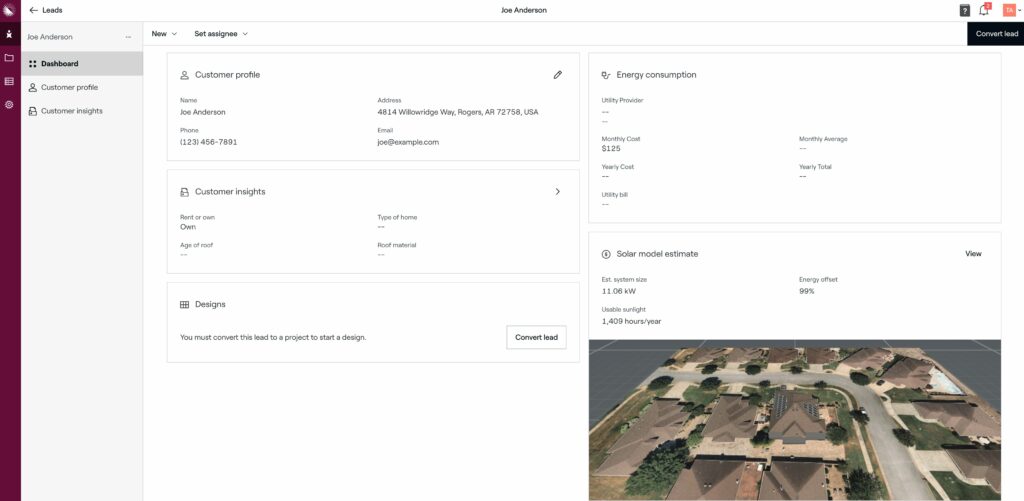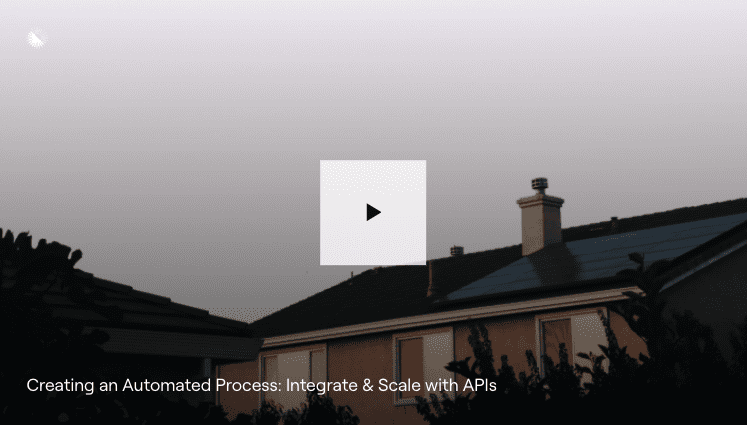When it comes to running a solar business, generating leads can be one of the most difficult, and expensive, parts of making a sale. Aurora’s Lead Capture AI (LCAI) tool empowers marketers to boost their website conversion rates and generate higher-quality leads with an innovative, interactive experience for homeowners, powered by Aurora’s industry-leading solar design software. After launching the Lead Capture AI widget from within any website, homeowners can provide information about their home, answer customized qualification questions, instantly review a savings estimate and a 3D model of a solar system on their home, and provide their contact information.
In the previous posts in this series, we discussed calls to action, LCAI customization, and analytics. In this post, we’ll focus on qualifying leads that come in and using Aurora’s Leads API to sync lead data to your internal tools and speed up your processes.

How to qualify solar leads with LCAI
When a prospective solar homeowner provides contact information through Lead Capture AI, Aurora automatically creates a lead object in your Aurora tenant. In this lead object, you can see the 3D model that was generated along with all the information that was shared by the lead during the LCAI workflow.
With this data, your marketing and sales teams should be able to quickly decide whether this lead warrants immediate follow up. You may also consider automatically sorting or filtering leads based on their savings estimate or their responses to certain questions — ensuring that your teams are reaching out to the best opportunities first. As discussed in our post about LCAI Analytics, another option is to prioritize leads based on whether they submitted their information via your website’s homepage, an ad campaign, or somewhere else.
Leveraging utility bill uploads
In one of the last steps of the Lead Capture AI flow, a lead is given the opportunity to upload a recent utility bill. In Aurora or via the Leads API, you can see whether an individual lead has uploaded a utility bill, which can give your team a head start on the qualification or design process.
Additionally, if a lead has taken the time and effort to upload a utility bill, you can likely assume that they are a highly qualified customer who should be prioritized. While Aurora does not have the ability to parse the energy consumption data automatically from the utility bill, the uploaded file can provide a great starting point to building out an accurate energy consumption profile once the lead is converted to an Aurora project.
Leads API overview
Although you can view a lead and convert it to a project within Aurora, much of the same functionality is available via API. Specifically, via the Leads API, you can receive all relevant data about a lead, including contact information, data about the system design that was presented to them, and their answers to any qualification questions. Because you can retrieve answers to both pre-built and custom qualification questions via API, LCAI allows you to deliver the most relevant information directly to your sales reps or call centers, and even use this information directly in proposals.
As discussed in the previous posts, it’s possible to create multiple Lead Capture AI templates in Aurora to use in different places on your site or for split testing. With Leads API, it’s possible to discern the source of each lead by referencing the template ID or template name, or by referencing UTM parameters associated with your pages or campaigns.
Some of the most relevant data about a lead that can be retrieved via API includes:
- Contact information
- Address
- Average Utility Bill
- Estimated Savings
- System Size
- Annual Production
- Answers to Qualification Questions
- Template ID and Referrer Parameters
Syncing to other tools
Aurora’s API also has several webhooks that you can use to be notified whenever a new lead is generated. With these webhooks, you can automatically pass lead data to other internal tools, such as your CRM. This is very beneficial when lead qualification or follow-up is done in a tool separate from Aurora, as your team will immediately have all the necessary information to follow up as quickly as possible.
In today’s competitive solar market, a few minutes can be the difference between a won and a lost sale, so these automated workflows are extremely powerful. You can find full instructions on how to sync new leads to other tools in this tutorial.
Converting Leads into Aurora projects

Once a lead has been qualified by your team, after their first sales appointment for instance, it can be converted directly into an Aurora project either in the Aurora platform (with the button at the top right in the image above) or via API.
When you convert a lead into a project, the project will automatically inherit homeowner information from the lead. By subscribing to the Lead Converted webhook, you can easily connect the newly created project to the relevant objects in your CRM and other tools. If you have a larger API workflow built out with Aurora’s Sync API, lead conversion can also be used to kick off the next step in your workflow, so you can sell and install a solar system for this lead.

As we discussed in the first post, our goal is to help Lead Capture AI users optimize their website, improve the LCAI experience for visitors, and ultimately attain more, higher-quality leads to pass on to sales teams.
If you have any questions that haven’t been answered in these posts, or would just like additional information or suggestions, schedule a personalized demo — or get the info right now by clicking the chat box at the lower right of the screen.
Check out the other blogs in this series here:
- Make the leads come to you: Using calls to action to maximize clicks
- Get solar leads hooked with Lead Capture AI customizations
- Get more solar leads using Lead Capture AI, analytics, and ads
- This post — Qualify solar leads quickly and easily with Lead Capture AI and the Leads API



